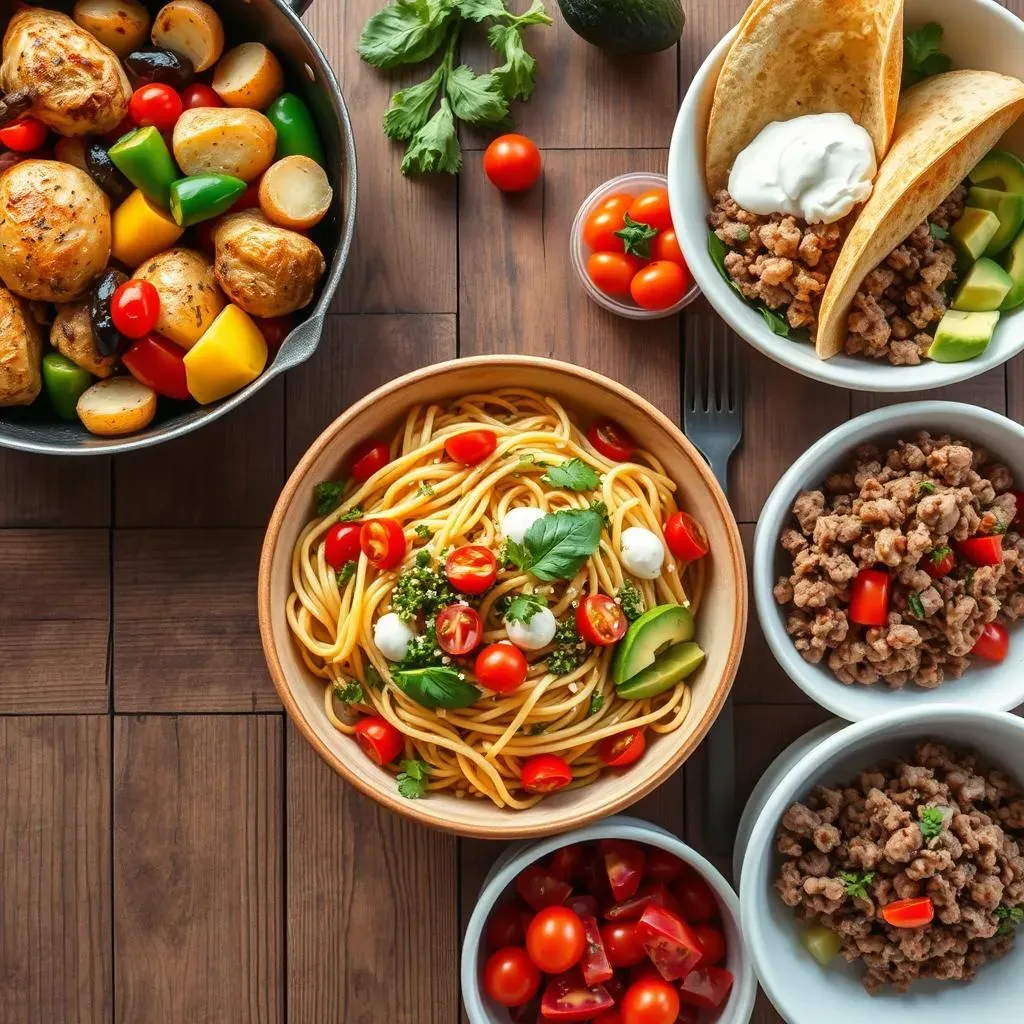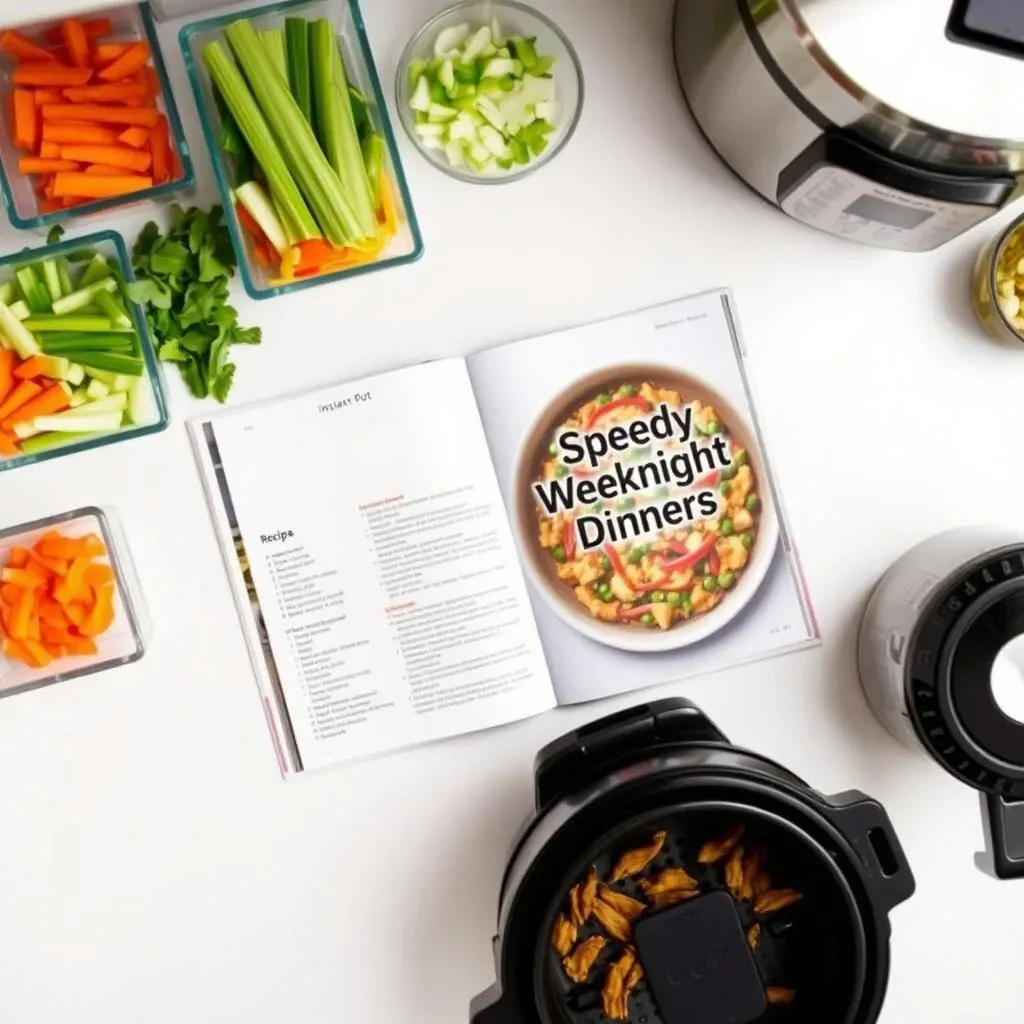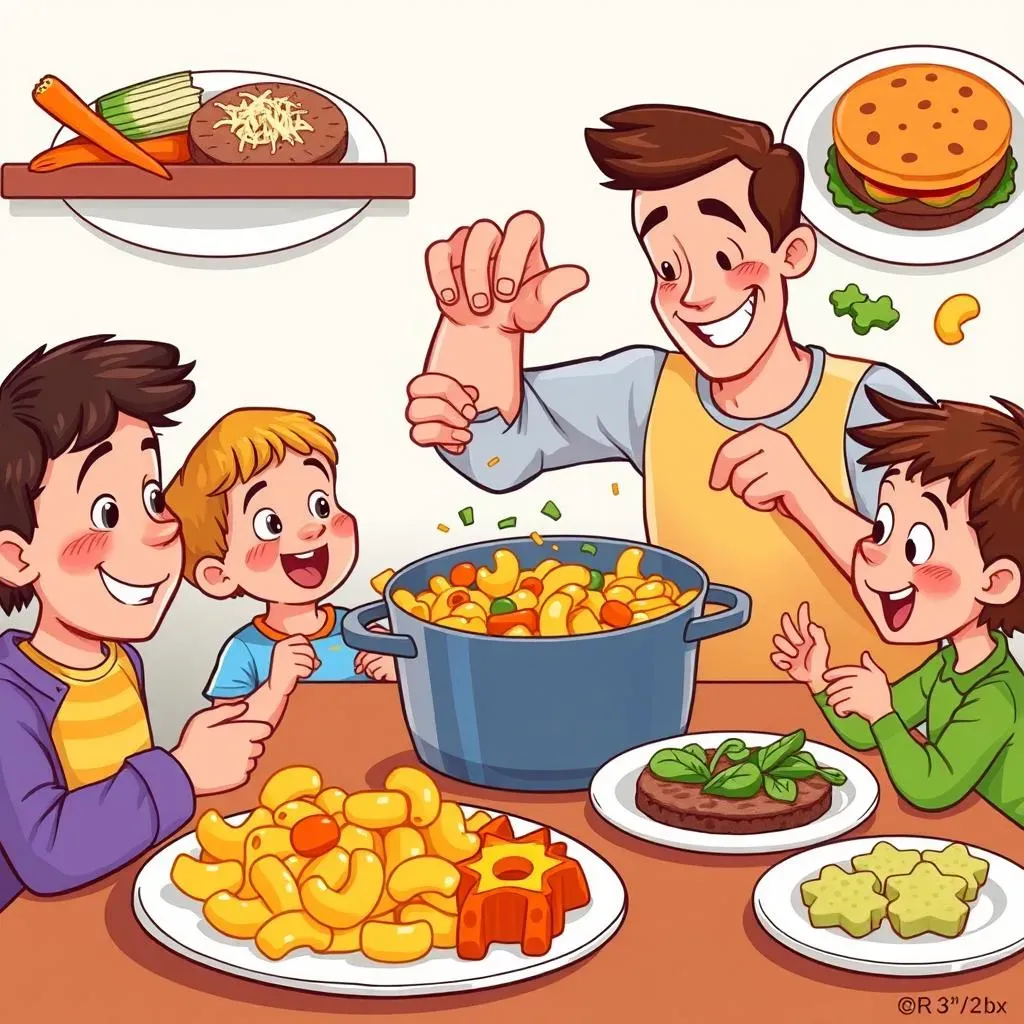Table of Contents
Juggling work, school, and after-school activities can make weeknight dinners a real challenge. The temptation to order takeout or rely on processed foods is strong, but what if you could whip up delicious and nutritious meals in under 30 minutes? This article is your guide to fast healthy dinner ideas for family that are both quick to prepare and packed with flavor. We'll explore budget-friendly options, sneaky ways to incorporate veggies for picky eaters, and time-saving prep strategies to make weeknight dinners a breeze. Forget the stress and embrace these simple recipes and tips to create a sustainable healthy eating routine for your whole family. Get ready to transform your dinnertime from chaotic to cherished with these easy-to-implement strategies and mouthwatering meal ideas.
Why Fast Healthy Dinner Ideas for Family are a Game Changer

Why Fast Healthy Dinner Ideas for Family are a Game Changer
Let's face it, weeknights are usually a whirlwind. Between school, work, sports, and everything else, finding the time and energy to cook a healthy meal for the family can feel impossible. That's where the magic of fast healthy dinner ideas for family comes in. It's not just about convenience; it's about reclaiming your time, nourishing your loved ones, and setting a positive example for healthy eating habits. When you prioritize quick and healthy meals, you're investing in your family's well-being and creating a more enjoyable and less stressful dinnertime experience.
Top 10 Fast & Healthy Dinner Ideas for Family on a Budget

Top 10 Fast & Healthy Dinner Ideas for Family on a Budget
One-Pan Wonders: Minimal Cleanup, Maximum Flavor
One-pan meals are a lifesaver on busy weeknights. Toss veggies and protein with your favorite seasonings and roast them together for a complete meal with minimal cleanup. Sheet pan fajitas with bell peppers, onions, and chicken or shrimp are always a hit. Or try a sausage and veggie bake with potatoes, broccoli, and Italian sausage. The key is to chop everything into similar sizes so it cooks evenly. Add a drizzle of olive oil and your favorite herbs and spices, and you're good to go!
Pasta Power: Quick, Customizable, and Always a Crowd-Pleaser
Pasta is a pantry staple for a reason. It's quick-cooking, versatile, and budget-friendly. Whole wheat pasta provides added fiber and nutrients. For a speedy meal, try tossing cooked pasta with pesto, cherry tomatoes, and mozzarella balls. Or, create a creamy tomato sauce with canned tomatoes, garlic, and a splash of cream. Add some cooked ground turkey or lentils for extra protein. Don't forget to load up on veggies like spinach, zucchini, or bell peppers. Pasta night can be healthy and delicious with a few simple swaps!
Taco Time: A Fun and Interactive Family Dinner
Tacos are always a winner, especially with kids. They're customizable, interactive, and easy to adapt to different dietary needs. Use lean ground beef, shredded chicken, or black beans as your protein base. Set out a variety of toppings like shredded lettuce, diced tomatoes, salsa, avocado, and plain Greek yogurt (a healthy sour cream alternative). Use whole wheat tortillas or lettuce wraps for a lighter option. Taco night is a great way to get kids involved in meal prep and encourage them to try new flavors and textures.
Taco Bar Essentials:
- Protein: Ground beef, shredded chicken, black beans
- Veggies: Shredded lettuce, diced tomatoes, onions, bell peppers
- Toppings: Salsa, avocado, Greek yogurt, shredded cheese
- Tortillas: Whole wheat or corn tortillas, lettuce wraps
Prep Like a Pro: Tips for Speedy Weeknight Family Dinners

Prep Like a Pro: Tips for Speedy Weeknight Family Dinners
Master the Art of Meal Planning
Meal planning is your secret weapon for stress-free weeknight dinners. Take some time on the weekend to plan out your meals for the week. Check your pantry and fridge to see what ingredients you already have on hand. Create a shopping list and stick to it to avoid impulse purchases. When planning your meals, consider your family's preferences, dietary needs, and schedule. Choose recipes that are quick and easy to prepare, and don't be afraid to repeat meals throughout the week. A little planning can go a long way in saving you time and energy during the busy week.
Think of meal planning like packing for a trip. You wouldn't wait until the last minute to throw everything in a suitcase, would you? You'd make a list, gather your essentials, and pack strategically. Meal planning is the same idea – it's about being prepared and organized so you can avoid the dinnertime scramble.
Embrace the Power of Prep
Once you have your meal plan in place, it's time to start prepping. This is where you can really save time during the week. Chop vegetables, marinate meat, and cook grains ahead of time. Store everything in airtight containers in the fridge. You can even assemble entire meals in advance and simply reheat them when you're ready to eat. Batch cooking is another great time-saver. Make a big batch of soup, chili, or stew on the weekend and enjoy it throughout the week. The more you prep in advance, the less time you'll spend in the kitchen on busy weeknights.
I usually spend a couple of hours on Sunday afternoon prepping for the week. I chop all my veggies, cook a batch of quinoa or rice, and marinate some chicken or tofu. It makes such a difference during the week when I know I have all the ingredients ready to go. It turns a potentially stressful 45-minute cook into a 15-minute assembly.
Prep Task | When to Do It | Why It Helps |
|---|---|---|
Chop Vegetables | Weekend | Saves time during the week, makes cooking faster |
Marinate Meat/Tofu | Weekend | Adds flavor, tenderizes protein |
Cook Grains | Weekend | Ready-to-go base for meals |
Assemble Meals | Weekend or Weekday Morning | Quick reheating, minimal effort at dinnertime |
Leverage Your Kitchen Gadgets
Your kitchen gadgets can be your best friends when it comes to speedy weeknight dinners. A food processor can chop vegetables in seconds. A slow cooker or Instant Pot can cook meals while you're at work or running errands. An air fryer can quickly cook chicken, fish, or vegetables with minimal oil. Don't be afraid to experiment with different gadgets to see what works best for you. The right tools can make meal prep faster and easier, allowing you to spend less time in the kitchen and more time with your family.
I'm a huge fan of my Instant Pot. I can throw in a whole chicken with some vegetables and broth, and it's cooked in under an hour. It's a lifesaver on nights when I'm short on time. And my air fryer is perfect for crispy chicken nuggets or sweet potato fries without all the added oil.
Sneaky Veggies: Making Healthy Family Dinners Fun for Picky Eaters

Sneaky Veggies: Making Healthy Family Dinners Fun for Picky Eaters
Puree Power: Blending Veggies into Sauces and Soups
One of the easiest ways to sneak veggies into your family's meals is to puree them and add them to sauces and soups. Roasted vegetables like carrots, butternut squash, and sweet potatoes blend beautifully into creamy soups or tomato-based pasta sauces. You can also add pureed spinach or kale to pesto for an extra boost of nutrients. The key is to start with small amounts and gradually increase the quantity as your family gets used to the taste. They'll be none the wiser!
I once made a batch of mac and cheese with pureed butternut squash, and my kids devoured it without even realizing they were eating vegetables. It was a total mom win!
Grate Expectations: Adding Shredded Veggies to Everyday Dishes
Shredded vegetables are another great way to sneak veggies into your family's meals. Grated zucchini, carrots, or beets can be added to meatloaf, burgers, or even baked goods like muffins and pancakes. The shredded vegetables add moisture and nutrients without significantly altering the taste or texture of the dish. You can also add shredded cabbage or broccoli slaw to tacos, sandwiches, or salads for a crunchy and nutritious boost. Get creative and experiment with different combinations to find what your family enjoys.
Veggie Makeovers: Transforming Vegetables into Fun Shapes and Textures
Sometimes, all it takes is a little creativity to get kids excited about eating vegetables. Use cookie cutters to create fun shapes out of sliced cucumbers, carrots, or bell peppers. Roast vegetables until they're crispy and caramelized. Make vegetable skewers with cherry tomatoes, mozzarella balls, and basil leaves. Serve vegetables with a tasty dip like hummus, ranch dressing, or guacamole. The goal is to make vegetables more appealing and enjoyable for kids. Let them help with the preparation and encourage them to try new things. You might be surprised at what they'll eat when it's presented in a fun and engaging way.
Veggie Transformation Ideas:
- Cookie cutter shapes for cucumbers, carrots, bell peppers
- Roasted vegetables for crispy texture
- Vegetable skewers with cherry tomatoes, mozzarella, basil
- Served with tasty dips like hummus or guacamole
Beyond Recipes: Creating a Sustainable Fast Healthy Dinner Routine for Your Family

Beyond Recipes: Creating a Sustainable Fast Healthy Dinner Routine for Your Family
Building a Positive Food Environment
It's not just about the recipes; it's about the environment you create around food. Make mealtimes a positive and enjoyable experience. Turn off the TV, put away the phones, and focus on connecting with your family. Encourage conversation and create a relaxed atmosphere. Involve your kids in meal planning and preparation. Let them help choose recipes, chop vegetables, or set the table. When kids feel involved, they're more likely to try new things and develop a positive relationship with food. Remember, food is more than just fuel; it's a source of nourishment, connection, and enjoyment.
I know it's not always easy, especially with picky eaters, but try to avoid using food as a reward or punishment. This can create unhealthy associations with food and lead to emotional eating. Instead, focus on offering a variety of healthy options and letting your kids choose what they want to eat. It's okay if they don't eat everything on their plate. The goal is to create a positive and supportive environment where they feel comfortable exploring new foods.
Establishing Realistic Expectations and Goals
Rome wasn't built in a day, and neither is a sustainable healthy dinner routine. Start small and gradually make changes over time. Don't try to overhaul your entire diet overnight. It's okay to have pizza night once in a while. The key is to focus on making consistent, sustainable changes that you can stick with long-term. Set realistic expectations and celebrate your successes along the way. If you slip up, don't beat yourself up about it. Just get back on track with your next meal. Remember, progress is better than perfection.
- Start with one or two new recipes per week.
- Focus on adding more fruits and vegetables to your meals.
- Make small swaps, like whole wheat pasta instead of white pasta.
- Prep ingredients on the weekend to save time during the week.
- Don't be afraid to ask for help from family members or friends.
Making it a Family Affair: Involving Everyone in the Process
A sustainable healthy dinner routine is a team effort. Get everyone involved in the process, from meal planning to grocery shopping to cooking and cleaning up. Assign age-appropriate tasks to each family member. Even young children can help wash vegetables or set the table. Older kids can help with more complex tasks like chopping vegetables or following a recipe. When everyone contributes, it takes the pressure off of one person and makes healthy eating a shared responsibility. Plus, it's a great way to spend quality time together as a family.
My kids love helping me cook. Even though it can be a little messy sometimes, it's worth it to see them excited about trying new foods. And it's a great way to teach them valuable life skills that they'll use for years to come.
Task | Age Group | Example |
|---|---|---|
Meal Planning | All Ages | Brainstorm ideas, choose recipes |
Grocery Shopping | Older Kids/Adults | Help find ingredients, compare prices |
Cooking | All Ages (with supervision) | Wash vegetables, stir ingredients, set timer |
Cleaning Up | All Ages | Clear the table, wash dishes, wipe counters |
Conclusion: Fast Healthy Family Dinners are Within Reach
Creating fast, healthy dinner ideas for family doesn't have to be a daunting task. By embracing simple recipes, strategic meal prep, and a willingness to get creative with ingredients, you can transform your weeknight dinners into enjoyable and nutritious experiences. Remember, it's about progress, not perfection. Start with one or two new recipes, experiment with different vegetables, and find what works best for your family's tastes and schedule. With a little planning and a dash of inspiration, you can create a sustainable healthy eating routine that benefits everyone.